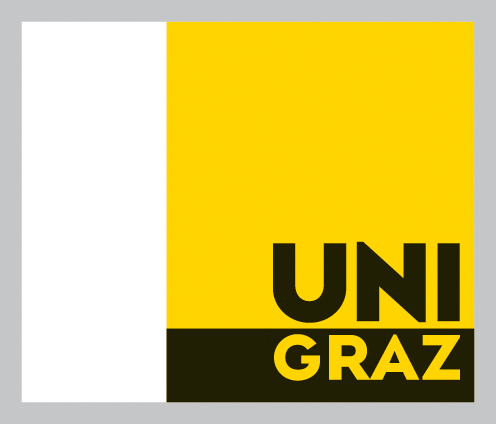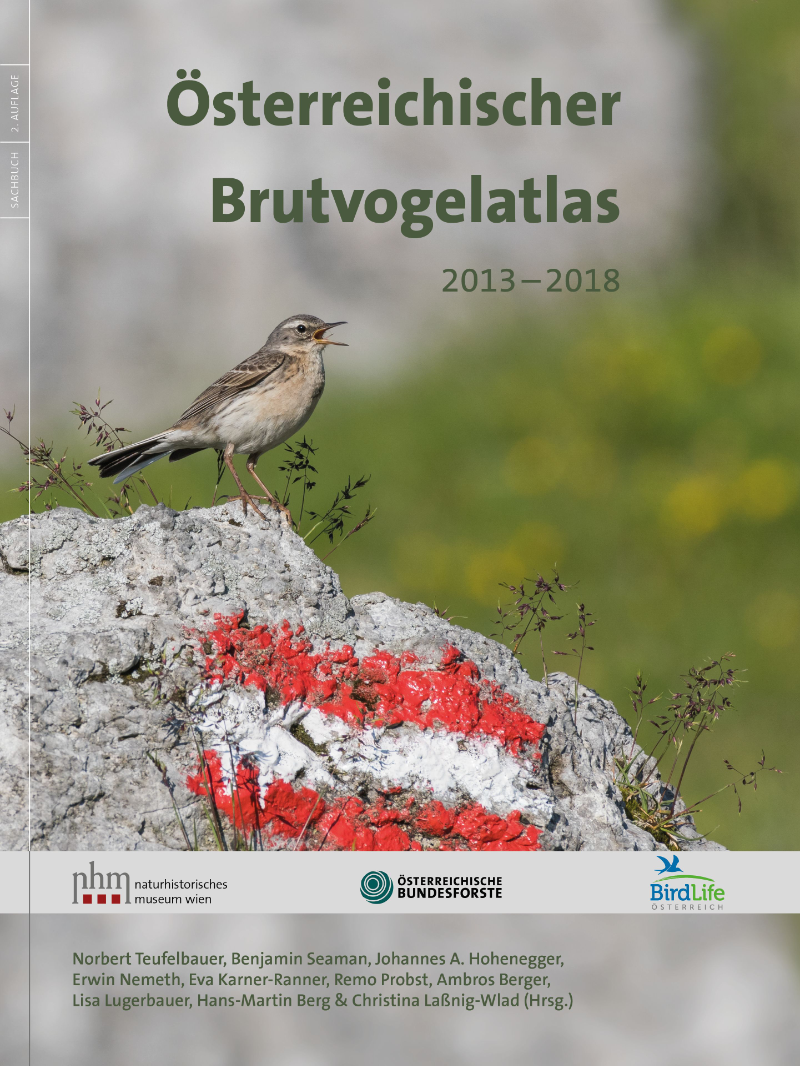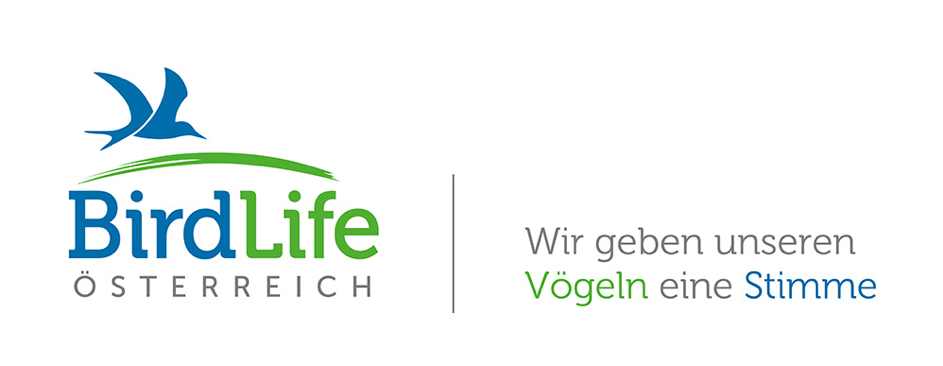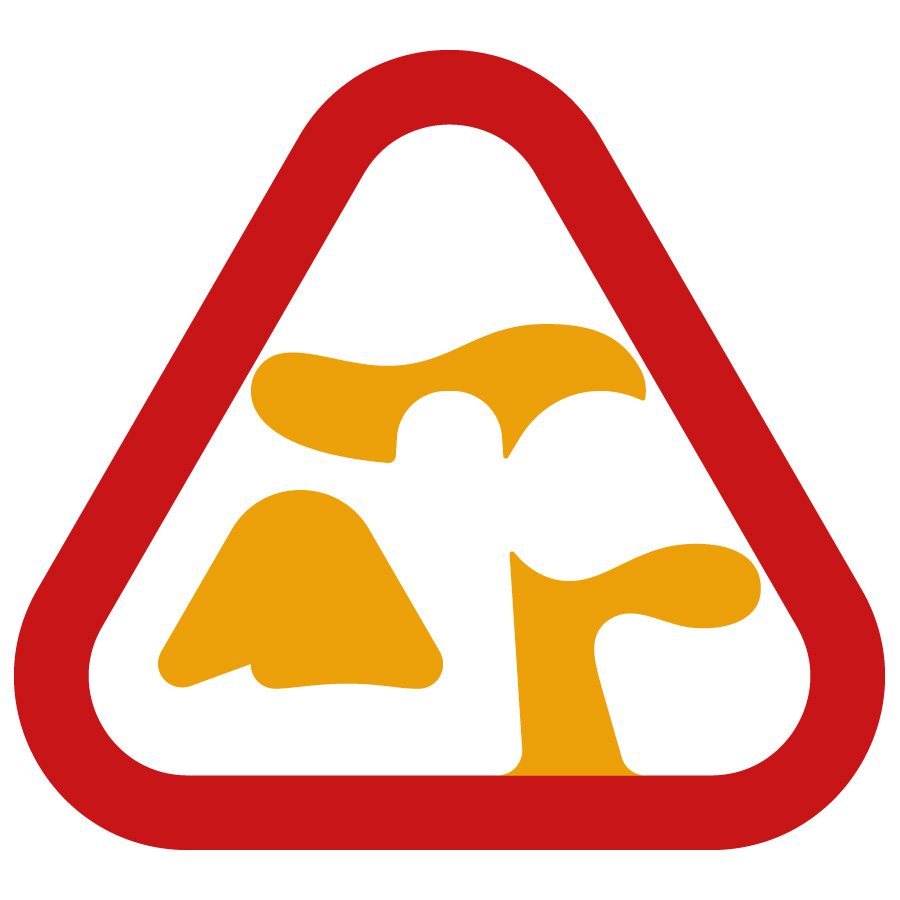
Florian Heigl
University of Graz
With almost 30,000 students and six faculties, the University of Graz is the largest university in Styria and with its foundation in 1585 the second oldest university in Austria. With the motto "We work for tomorrow", the University of Graz emphasises its commitment to research and teaching on various future issues. One of the flagship projects for 2023-2026 aims to provide innovative impetus to promote dialogue between academics and the general public.
Citizen Science has a long tradition in Graz, especially in bee research. In addition to national projects on bee health, several EU projects have also been funded in Europe in recent years, in which beekeepers from Austria and other countries have participated as citizen scientists. As part of several Sparkling Science projects, young people gain insights into a wide range of scientific fields: These include research into Latin inscriptions in the city of Graz, nutrition as part of socio-ecological change, changes in snow in Greenland and Austria as well as strengthening trust in science through participatory communication.

ÖMG
The Austrian Mycological Society (ÖMG) is a learned society. It represents the practical and scientific mycology and is open to all interested persons. The ÖMG has a long history dating back to 1919 and has been open to the public since its foundation. It was even founded especially to work closely with the population, because in the founding period there was a shortage of food, so mushroom picking was crucial for nutrition and the distinction between poisonous and edible mushrooms became extremely important.
The project "Database of mushrooms in Austria" makes it possible to document the distribution of mushrooms throughout Austria. The online version of the database offers the possibility to view the distribution patterns of the more than 7,700 mushroom taxa and to retrieve the current data status with more than 370,000 find reports from over 12,000 different sites throughout Austria. In addition to the most exact location and time information possible, each data set contains important information on the habitat and substrate of the mushroom records, on the identification and scientific documentation of the mushroom reports as well as on the origin and source of the stored data, which currently amounts to more than 6 million individual data items (website of the ÖMG).
ZSI
The Centre for Social Innovation (ZSI) is a social science institute, located in Vienna and employs about 60 people. The ZSI was founded in 1990 and since then has carried out over 600 projects worldwide.
Citizen Science has also been part of the ZSI's research area for a long time. For example, staff members of the Institute have contributed to the White Paper on Citizen Science and have thus decisively influenced Citizen Science on a European level. ZSI was significantly involved in the EU project Captor and was working on the measurement of ozone together with citizens. Furthermore, ZSI is working with 18 other institutions on the quality criteria catalogue for Citizen Science projects on the platform Österreich forscht.

AGES
The Agency for Health and Food Safety GmbH (AGES) is a company of the Republic of Austria and was founded on 1 June 2002.
AGES runs its own citizen science projects, such as the project "Tea Bag Index", in which experiments on the decomposition process in soil are conducted with the help of tea bags in order to better understand the global CO2 cycle. With this tea bag method, even lay people around the world can make a valuable contribution to science and the environment: they simply bury tea bags in the ground, dig them up again after a while and weigh them. The weight loss indicates how much plant material, in this case tea, has been decomposed. This simple and cheap method for determining decomposition rates has been scientifically proven. With these experiments, comparable data can be obtained worldwide, especially from regions for which no corresponding information is available so far. On the project's website you can find more information about this project.
In addition, AGES in cooperation with the Citizen Science Network Austria as well as the FWF (Austrian Science Fund) organized the Austrian Citizen Science Conference 2017. Under the motto "Expanding Horizons" more than 200 scientists met from 2-4 March 2017 to learn about the latest developments in and around Citizen Science in Austria and around the world.
Naturschutzbund Österreich
The Naturschutzbund has a long tradition of cooperation between science and nature conservation. For more than 100 years its members (including many scientists) have been working together to promote nature conservation in Austria. Due to the many different skills and the great shared expertise of its members, it is possible to work for nature conservation and at the same time collect valuable data on biodiversity.
In 2006, www.naturbeobachtung.at was created, the largest online reporting platform for biodiversity data to date, which is open to the public and can be used for reporting.
Extract from the project website:
"Here you can not only report species, you can also find information in species profiles, view distribution maps of special animal and plant species, present the most beautiful nature pictures in the forum or ask more than 30 experts to help you identify them.
Meanwhile www.naturbeobachtung.at has almost 5,000 registered users, who so far have reported more than 260,000 findings, more than 120,000 photos and 80,000 forum contributions in the discussion forum. The incoming data is used on an ongoing basis, it flows into scientific studies and publications, into nature conservation and in the public relations work of the Naturschutzbund and represents an important basis for conservation projects throughout the country.It is astonishing that www.naturbeobachtung.at works like a "Biologikum": citizen scientists "trained" by experts help "new visitors" to identify species themselves after only a few years. This is also the purpose of Austria's oldest "Citizen Science nature data collection platform": to raise the level of species knowledge in the population and to sensitize them to the needs of endangered species and our nature".
BOKU University
BOKU University was founded in Vienna in 1872 and offers a wide range of courses in the natural and life sciences, which is currently used by more than 12,000 students. Through its applied study programmes, BOKU has a long tradition of cooperation with the general public. Thus, one of the university's main focuses is also the communication of new findings to the general public.
In the past, BOKU has carried out numerous Sparkling Science as well as Participatory and Transdisciplinary projects. Since 2013, a working group has been working intensively on Citizen Science, and in 2015 it also held the first Austrian Citizen Science Conference, which is now held annually. This working group is running the platform "Österreich forscht" and founded the Citizen Science Network Austria in 2017 to further strengthen the cooperation between scientific institutions and the general public.

Avian malaria
Reporting and collecting dead songbirds
You find a dead songbird in your garden? Your cat brings home a dead bird? If you are in this situation, you can support a current research project of the University of Veterinary Medicine Vienna.
Avian malaria
Within the framework of the Citizen-Science project "Avian malaria", dead songbirds and woodpeckers from Vienna, Lower Austria, and Burgenland are collected by the Institute of Pathology at the University of Veterinary Medicine Vienna. The birds are examined scientifically to gain further knowledge about the pathological effects of haemosporidian infections in songbirds. Haemosporidians are unicellular blood parasites that are transmitted by mosquitoes and other bloodsucking insects. The researchers are particularly interested in the conditions under which the blood parasites proliferate strongly in the tissues of the birds and thus cause serious and sometimes fatal avian malaria diseases. The collection campaign is carried out in cooperation with StadtWildTiere, Wilde Nachbarn and Birdlife Austria.
Reporting and collecting dead birds
You can report the finding of a dead bird using a report form on the homepage of StadtWildTiere. Besides, you can send a photo of the bird found via e-mail to This email address is being protected from spambots. You need JavaScript enabled to view it.. This makes it easier to check and confirm your report. Nearly all songbird species (except for blackbirds and crows) and woodpeckers are of interest. Information on the safe handling and storage of dead birds can be found on the project homepage.
How do the birds get to the University of Veterinary Medicine Vienna?
Shortly after your report, the project team will contact you (by phone or e-mail) to clarify whether the reported bird is needed and to arrange the pick-up of the dead birds in case of acceptance. To keep the effort for you as low as possible, the pick-up and transportation will be carried out by a transport service (Medlog). The transportation costs will be covered entirely by the Vetmeduni Vienna.
Scientific studies
The dead birds are subjected to pathological examination at the Institute of Pathology of the Vetmeduni Vienna and tested for the presence of haemosporidian parasites. In positive cases, the pathogen species are identified and tissue changes caused by the parasites are analyzed. In any case, the project team will inform you about the results of your finding, and the collected data will be published on the project homepage at the end of the study. All research-related data is stored in the internal patient database of the Vetmeduni Vienna.
The reporting and collecting campaign ran from June to October 2020.
Picture gallery
(Please click on the respective photo to enlarge it)
-
 Collect birds professionally (T Himmel) Collect birds professionally (T Himmel)
Collect birds professionally (T Himmel) Collect birds professionally (T Himmel) -
 Procedure of the Avian Malaria Project (VetMedUni PR) Procedure of the Avian Malaria Project (VetMedUni PR)
Procedure of the Avian Malaria Project (VetMedUni PR) Procedure of the Avian Malaria Project (VetMedUni PR) -
 Bird section (T Himmel) Bird section (T Himmel)
Bird section (T Himmel) Bird section (T Himmel) -
 Plasmodium Meronten (T Himmel) Plasmodium Meronten (T Himmel)
Plasmodium Meronten (T Himmel) Plasmodium Meronten (T Himmel)
https://www.citizen-science.at/en/immerse/worldwide/author/934-florianheigl?start=100#sigProId5166146d72
Breeding bird atlas
The Austrian Breeding Bird Atlas 2013-2018, published in 2024, is the most up-to-date and comprehensive source of information on the occurrence of breeding birds in Austria and changes in their distribution over the last few decades.
What is the Breeding bird atlas?
The breeding bird atlas presents the distribution of all 235 bird species that bred in Austria in the period 2013-2018 on 680 pages and compares these results with the first Austrian breeding bird atlas (1981-1985). During the six field survey years, over 2,300 citizen scientists collected more than 2.1 million data records for this project. Over the following years, the data was checked and analysed - distribution maps, model maps, elevation diagrams and comparative analyses with the first breeding bird atlas were produced. Over 50 authors were involved in the creation of the species texts and over 40 photographers made their images available free of charge. After 30 years, all these contributions have resulted in a new standard work of ornithology.
The project was supported by the Federal Ministry of Agriculture, Forestry, Regions and Water Management and the Federal Ministry for Climate Action as part of the Rural Development Programme 2014-2020.
The Austrian Breeding Bird Atlas 2013-2018 has been published by Verlag Naturhistorisches Museum Wien and can be ordered for EUR 95 at: This email address is being protected from spambots. You need JavaScript enabled to view it..

Join in
The project has been completed and participation is unfortunately no longer possible.
Tasks and roles in the project
- Observers: Surveyed the birds according to the specified counting method in their free time.
- Quadrant allocation: Province-specific allocation of open quadrants to the respective observers, targeted addressing of people to close mapping gaps, distribution of mapping documents, first contact point for questions and problems
- Organisation ("Atlas Team"): Organisation of all work steps necessary for mapping, information and training of observers, organisation of methodological workshops for new observers, organisation of atlas conferences in poorly observed areas etc., data verification, carrying out of evaluation and publication
- Planning: Small committee of experts that carried out the basic preparatory work for the counting method - elaboration of different variants, discussion of advantages and disadvantages, etc.
- Methods group: wider panel of experts who discussed the different counting methods and proposed the final method to be used
- Steering group BirdLife: Advice on organisational issues concerning the mapping, especially regarding the regional situation in the individual federal states
- Project steering group: Complete project management
- Project advisory Board: Advisory body, composed of representatives of important stakeholders and with an advisory function for the steering group
Citizen Science Seminar
In 2023, poject coordinator Norbert Teufelbauer held a lecture about the project (in German) as part of the lecture series "Citizen Science Seminar" at the University of Natural Resources and Life Sciences Vienna (BOKU). You can watch the video recording of the lecture down below.
-
 Bird watching with binoculars Bird watching with binoculars
Bird watching with binoculars Bird watching with binoculars -
 Professional bird watching Professional bird watching
Professional bird watching Professional bird watching -
 Observation is more fun as a team! Observation is more fun as a team!
Observation is more fun as a team! Observation is more fun as a team!
https://www.citizen-science.at/en/immerse/worldwide/author/934-florianheigl?start=100#sigProIde5dbec0461



Golden jackal
The golden jackal (Canis aureus) was not considered native in Austria, until the first golden jackal discovery was made in 1987, followed by sporadic records scattered over several federal states and in 2007 the first reproduction record was documented in the National Park "Neusiedler See-Seewinkel". Since then, rumours about camera trap pictures, fallow deer and one or two sightings have led to the assumption that these secretly living animals are present in some areas of Austria. In the context of the ongoing research project "The Golden Jackal in Austria", further evidence has been collected since October 2015. By means of acoustic stimulation in suitable habitats we carry out active monitoring and search for droppings and traces.
If you think you have seen a golden jackal or find a dog-like animal on your wild camera, please report your suspicion to us at: www.goldschakal.at, via the reporting form or by e-mail to the coordination and reporting office This email address is being protected from spambots. You need JavaScript enabled to view it..
The golden jackal project initiated the International World Jackal Day in 2023 and has since offered a webinar on interesting topics regarding the world of jackals every year on April 19th. Further Information can be found here: www.worldjackalday.com.
Information about the golden jackal
The golden jackal is a very elusive animal and lives very hidden, at a first and only fleeting glance, the distinction to fox or wolf is sometimes not so easy - but on closer inspection there are a few clear characteristics.
With a shoulder height of up to 50 cm, a body weight of 10-13 kg and a body length of about 100 cm the golden jackal belongs to the medium sized predatory game. This makes it larger and also longer-legged than the fox, but considerably smaller than the wolf. Recognisable features of the golden jackal are, among other things, the fused bales of the two middle toes and the rod which is rather short in relation to the body (with 20-30 cm). Its fur is yellowish-grey (to reddish), dark in the area of the back and the tip of the tail, and golden on the sides and legs. His brown face mask is marked by a white pattern around the muzzle and on the neck.
Golden jackals killed on roads can also be entered in the Roadkill project. Further information can be found on the project's YouTube channel.
Dr. Jennifer Hatlauf was a DOC-scholar of the Austrian Academy of Sciences. The Golden jackal project was supported by a bilateral "WTZ"- grant.
Newest publications
Stefanović M, Bogdanowicz W, Adavoudi R, Martínez-Sosa F, Doan K, Flores-Manzanero A, Srinivas Y, Banea OC, Ćirović D, D'Amico G, Djan M, Giannatos G, Hatlauf J, Hayrapetyan V, Heltai M, Homel K, Hulva P, Ionică AM, Jhala YV, Juránková J, Kaboli M, Khosravi R, Kopaliani N, Kowalczyk R, Krofel M, Lanszki J, Lapini L, Lymberakis P, Männil P, Markov G, Mihalca AD, Miliou A, Modrý D, Molchan V, Ostrowski S, Pakeltytė G, Ruņģis DE, Šnjegota D, Szabó L, Tryfonopoulos GA, Tsingarska E, Volokh AM, Wójcik JM, Pilot M (2024) Range-wide phylogeography of the golden jackals (Canis aureus) reveals multiple sources of recent spatial expansion and admixture with dogs at the expansion front. Biological Conservation, 290, 110448. https://doi.org/10.1016/j.biocon.2024.110448
Böcker F, Weber H, Arnold J, Collet S, Hatlauf J (2023) Interspecific social interaction between golden jackal (Canis aureus) and red fox (Vulpes vulpes). Mamm Res (2024). https://doi.org/10.1007/s13364-024-00737-2
Suss L, Hatlauf L (2024) Focus on carnivore communities: photo traps and data analysis in biodiversity research. Acta Zoobot (accepted).
Image gallery
Click on image to enlarge.
-
 fox fox
fox fox -
 golden jackal golden jackal
golden jackal golden jackal -
 golden jackal brochure golden jackal brochure
golden jackal brochure golden jackal brochure -
 golden jackal golden jackal
golden jackal golden jackal -
 size comparison fox - golden jackal - wolf size comparison fox - golden jackal - wolf
size comparison fox - golden jackal - wolf size comparison fox - golden jackal - wolf -
 wolves wolves
wolves wolves -
 tracks of a golden jackal tracks of a golden jackal
tracks of a golden jackal tracks of a golden jackal
https://www.citizen-science.at/en/immerse/worldwide/author/934-florianheigl?start=100#sigProId9ffe3ea818
Pollen Diary
The Pollen Diary was launched back in 2009 as a scientific project as part of a master's thesis at the WU Vienna Executive Academy. Meanwhile it has become an important service for pollen allergy sufferers in 13 European countries: Austria, Germany, Switzerland, France, Great Britain, Sweden, Finland, Croatia, Hungary, Lithuania, Serbia, Slovenia and Turkey. The number of users is growing every year, not at least because of the projects that were made possible by the Pollen Diary, such as the pollen app, the exposure map and the personalized pollen information.
Users have the possibility to document their own allergic complaints (intensity and symptoms) together with their medication intake. This gives an overview of the pollen allergy and allows them to compare the symptoms with the measured pollen concentrations on a continuous basis as well as at the end of the stress phase of the allergy. In addition, it is possible to download an excel file with all entries. There, all data are summarized and additionally correlation calculations of pollen count and symptoms are provided. This is a first step towards the identification of the trigger. And even after the diagnosis by a specialist, the pollen diary is a valuable support for patients and medics to track the success of a therapy, the administration of medication or the course of the pollen allergy.
To make such a service possible in the first place, the Pollen Diary is linked to the European pollen database, and can therefore be used without any problems in all countries where it is already available. Special attention has been paid to easy handling as well as to compliance with the latest EU directives on data protection (more under the terms of use of the Pollen Diary).
Since 2013, the pollen diary can also be accessed via the "Pollen" app on Android and iOS. If a user documents complaints, a personalised pollen forecast is available free of charge, tailored to the personal reaction profile. Via the app, users can also get the stress forecast and other practical helpers for the everyday life of an allergy sufferer, which are offered free of charge on the homepage of the Austrian Pollen Warning Service.
Europe-wide pollen information is reached via this portal: www.polleninfo.org.
Image gallery
https://www.citizen-science.at/en/immerse/worldwide/author/934-florianheigl?start=100#sigProIdb081d519a9














